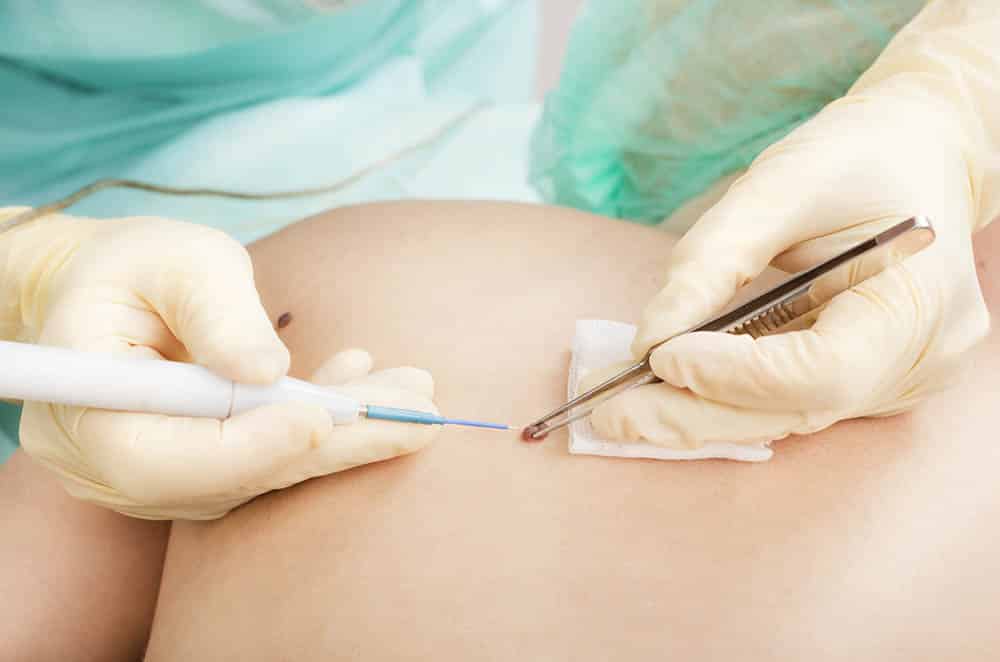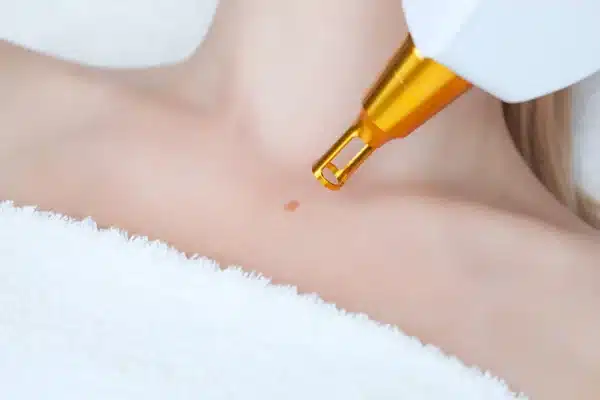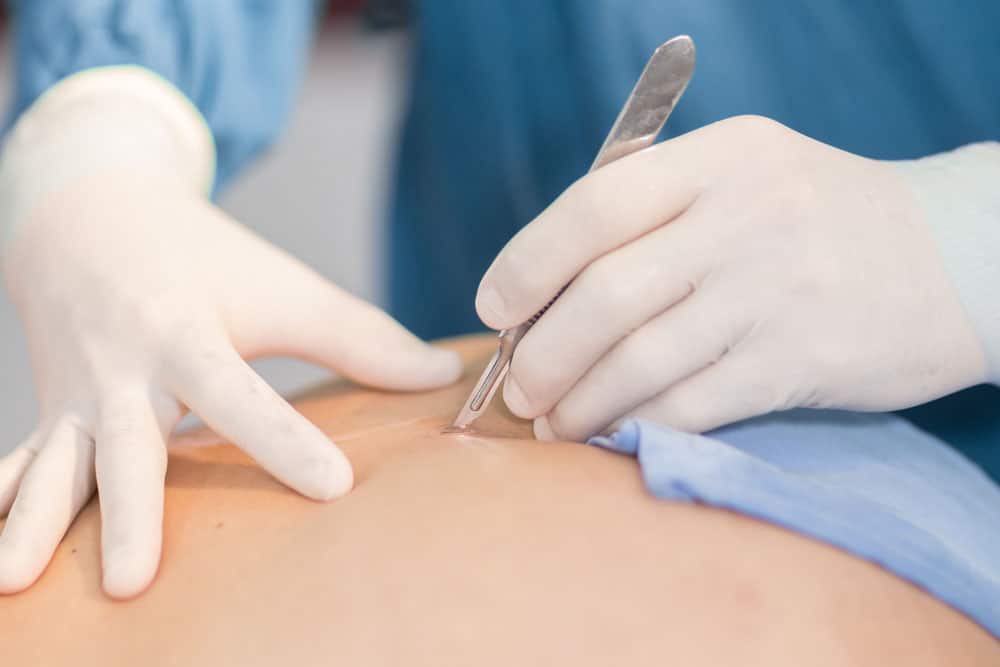People have been preoccupied with facial moles since ancient times. Having a mole (or moles) was considered a sign of evil in medieval Europe – witches and devil-worshippers were often shown with prominent moles.
However, a mole was thought to be a mark of beauty during the 17th to 18th centuries. In modern-day Singapore however, moles are once again considered an aesthetic defect, particularly if the mole is hairy or protuberant.
Moles form when clusters of melanocytes (cells that produce skin pigment) grow out of control. Usually circular or oval, they may be flat or raised, smooth or rough, pigmented or skin coloured, and may even contain hairs.
Many patients ask me why they develop moles, especially patients who develop them later in life. The truth is that for most patients, moles develop in early childhood or sometime during the first 25 years of a person’s life. It is common for patients to develop around 25 moles over their entire life.
The biggest factors as to whether or not moles develop are hormones, genetic predisposition, and sun exposure. Hence, pregnant women, and teenagers tend to have a higher chance of moles appearing or growing.
As the years pass, these moles change slowly in shape and size, developing a different colour or becoming raised. Some moles change while some might remain the same throughout your life.
Many people in Singapore want mole removal done because
Proper mole removal by a medical professional is essential.
Unqualified practitioners such as spa or facial consultants often produce scarring and incomplete removal or can miss important diagnoses like skin cancer.
It’s important to regularly check your skin for any changes to existing moles or the appearance of new ones. If you notice any of these signs, it’s crucial to seek medical attention promptly. While many moles are harmless, early detection is key in treating skin cancer effectively.
If a mole is suspected to be cancerous, it should not be vaporized or destroyed. Rather, it should be removed and sent for microscopic examination by a pathologist who will check the sample for cancer cells and may also perform additional tests to determine the type and stage of any cancer found. The results of these tests will guide the treatment plan.”
CO2 laser is strongly absorbed by water in cells under the skin. Laser energy vaporizes a layer of skin cells together with a surrounding zone of coagulation. Ultrapulse CO2 produces very short pulses of laser energy with high peak power. The amount of tissue vaporization vs coagulation can be tailored, allowing for precise vaporization of only the abnormal tissue without causing too much collateral damage. The entire process results in successful mole removal treatment.

High frequency radiofrequency is strongly absorbed by water in cells causing vaporization or coagulation depending on the waveform. It can be used to dissect out moles or coagulate them. Insulated needles can also be used to treat buried moles while sparing the skin surface, reducing the downtime and chance of scarring.
Pigment lasers used for mole removal have wavelengths that are similar to lasers used to remove pigmentation but with longer pulse durations. Ruby (694nm) or alexandrite (755nm) lasers are commonly utilized as they have very high melanin absorption and relatively deep skin penetration. Pigment lasers are very specific for pigmented mole cells. Thus they have a relatively low risk of scarring compared to other mole removal methods and are popular amongst patients looking for 'scarless' mole removal. However, they have relatively limited clearance so not all moles are suitable for mole removal with pigment laser.


A mole (or moles) that extends through most of the dermis or that needs to be sent to the laboratory to be examined under the microscope should be surgically excised with a removal surgery. Cold steel, ultrapulse CO2, or high-frequency radiofrequency are used to dissect the lump. The direction and position of the incision are designed to camouflage the scar. The resultant wound is closed with a tension-free layered technique using absorbable and non-absorbable sutures according to plastic surgical principles to produce an aesthetically pleasing result.
Dr Wan believes it is important to try to get the mole removal right the first time. Each method of mole removal has its own advantages and disadvantages. Which method is best for you depends on:
Dr Wan is constantly thinking about how to innovate novel mole removal techniques that give more complete mole removal while preserving as much normal tissue as possible to prevent scarring. He particularly enjoys tackling difficult cases such as recurrent moles or large raised moles. Patients with such moles may have been advised that surgery and the attendant surgical scarring are the only choices, that the mole is impossible to remove, or that many many sessions would be required.
Parents may also be considering whether and when to remove a cosmetically significant mole in their child. Dr Wan understands how important an excellent result can be in such difficult cases, and is constantly striving to get the perfect patient outcome.
The major concerns that patients have with mole removal are that the mole may recur or that scarring could result. To ensure the best outcome, it is important to ensure that all the abnormal mole tissue is removed while limiting the collateral damage to the surrounding tissues. To achieve this, Dr Wan uses methods that have a high degree of control over tissue damage. For example, ultrapulse CO2 and high-frequency radiofrequency can provide tunable amounts of ablation and coagulation to vaporize precisely only the mole cells, while pigment laser damages mainly pigmented mole cells. Fine control over the destruction of abnormal tissue limits collateral damage and the risk of complications such as scarring or post-inflammatory hyperpigmentation (PIH). Combination treatments use multiple lasers to overcome the limitations of each modality, producing lower recurrence and scarring risks, and are particularly suitable for moles that would have been traditionally removed with surgery.
Patients often wonder if a general practitioner (GP) or beautician can handle mole removal. While GPs are qualified to perform minor surgical procedures and may handle simple cases of mole removal, they may lack the specialized equipment and experience required for more complex methods or dealing with potential complications such as keloid scarring.
Medical aesthetics and specialist clinics may have access to more advanced state-of-the-art mole removal techniques and have more experience in handling delicate procedures and minimizing scarring. Thus, mole removal performed by specialists may result in better cosmetic outcomes, especially for moles located in visible or sensitive areas.
Mole removal costs in Singapore can range widely from less than $100 to a few thousand dollars. The price of mole removal depends strongly on the chosen medical aesthetic mole removal method, the number of moles treated, and the complexity of the mole removal.
It is common for patients to try to get their moles removed cheaply at beauty salons. While this can sometimes work, this exposes patients to unnecessary risk, particularly of missing or delaying the diagnosis of skin cancer. Furthermore, Dr. Wan has personally seen patients who have undergone multiple mole removal attempts at beauty salons or even medical aesthetics clinics only to have the mole repeatedly recur. They end up spending a lot of money and going through many lengthy and painful recoveries from mole removal procedures. Scarring can also develop, making subsequent complete removal even more difficult.
Opting for beauticians, despite the allure of lower costs, presents risks due to their lack of proper training and qualifications. I strongly advise against such options, as they can lead to complications. It is crucial to entrust skin tag removal to qualified medical professionals who prioritize accuracy and safety.

FOUNDER / MEDICAL DIRECTOR

Thankfully, most moles are benign and patients seek removal for cosmetic reasons. However, it is important to be vigilant for something more sinister. Any suspicious skin growth should be excised and sent for examination to rule out cancer.
Even if the mole is benign, not all lumps are suitable for laser mole removal. Bigger, deeper moles (especially those with hairs) that occupy much of the dermis may result in depressed scarring if vaporized. Surgical excision usually produces a better overall result in these cases.
In mole removal surgery, wound closure technique is very critical to the final aesthetic result. Dr Wan’s previous surgical training during plastic surgery rotations has equipped him with exposure to various plastic surgical techniques such as V-Y plasty, M-plasty, geometric closure, etc which allows him to advise patients on the most suitable method to use.
Sometimes, no matter how much we try to preserve the surrounding normal skin tissue, complete removal of the mole would produce a deep and/or wide wound. In these cases, ancillary treatments like growth factors (especially during the initial phase of healing) can help to significantly level out the wound, reducing the chance of sunken scarring. Moles on certain areas such as around the mouth can also be prone to keloid or hypertrophic scarring. It is essential to monitor the healing of the mole removal wound. Early treatment of mole removal keloids is imperative.
Topical medication, as well as sun damage protection, should be adhered to in order to reduce the risk of complications after mole removal. After the skin surface has healed, prophylactic fractional laser should be instituted early to blend the treated area with the surrounding skin and make the final result much more inconspicuous.
Address:
1Aesthetics, Medical & Surgery
#14-90 The Central Tower 1
8 Eu Tong Sen Street
Singapore 059818
Mon-Fri 9 AM to 7 PM
Sat 9 AM to 3 PM
Phone / WhatsApp:
+65 66125173 / +65 84899962
Email:
[email protected]